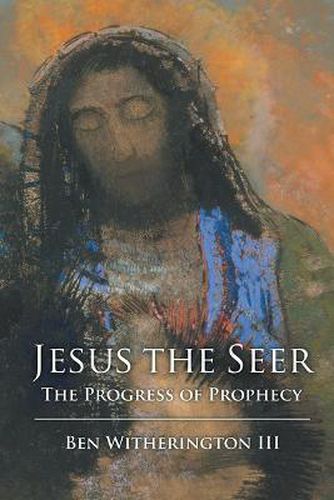Readings Newsletter
Become a Readings Member to make your shopping experience even easier.
Sign in or sign up for free!
You’re not far away from qualifying for FREE standard shipping within Australia
You’ve qualified for FREE standard shipping within Australia
The cart is loading…






Scholars recognize that prophetic traditions, expressions, and experiences stand at the heart of most religions in the ancient Mediterranean world. This is no less true for the world of Judaism and Jesus. Ben Witherington III offers an extensive, cross-cultural survey of the broader expressions of prophecy in its ancient Mediterranean context, beginning with Mari, moving to biblical figures not often regarded as prophets Balaam, Deborah, Moses, and Aaron, and to the apocalyptic seer in postexilic prophecy, showing that no single pattern describes all prophetic figures. The consequence is that different aspects of Jesus’ activity touch upon prophetic predecessors: his miracles, on Elijah and Elisha; his self-understanding as the Son of Man, on Daniel and 1 Enoch; his warnings of woe and judgment, on the writing prophets in Judean tradition; and his messianic entry into Jerusalem, on Zechariah 9. Witherington also surveys the phenomenon of apocalyptic prophecy in early Christianity, including Paul, Revelation, the Didache, Hermas, and the Montanist movement. Jesus the Seer is a worthy complement to Witherington’s other volume on Jesus, Jesus the Sage.
$9.00 standard shipping within Australia
FREE standard shipping within Australia for orders over $100.00
Express & International shipping calculated at checkout
Scholars recognize that prophetic traditions, expressions, and experiences stand at the heart of most religions in the ancient Mediterranean world. This is no less true for the world of Judaism and Jesus. Ben Witherington III offers an extensive, cross-cultural survey of the broader expressions of prophecy in its ancient Mediterranean context, beginning with Mari, moving to biblical figures not often regarded as prophets Balaam, Deborah, Moses, and Aaron, and to the apocalyptic seer in postexilic prophecy, showing that no single pattern describes all prophetic figures. The consequence is that different aspects of Jesus’ activity touch upon prophetic predecessors: his miracles, on Elijah and Elisha; his self-understanding as the Son of Man, on Daniel and 1 Enoch; his warnings of woe and judgment, on the writing prophets in Judean tradition; and his messianic entry into Jerusalem, on Zechariah 9. Witherington also surveys the phenomenon of apocalyptic prophecy in early Christianity, including Paul, Revelation, the Didache, Hermas, and the Montanist movement. Jesus the Seer is a worthy complement to Witherington’s other volume on Jesus, Jesus the Sage.